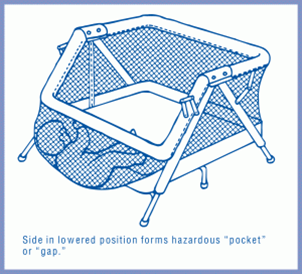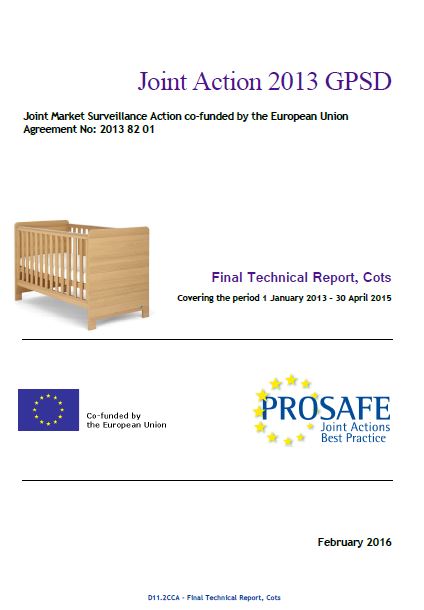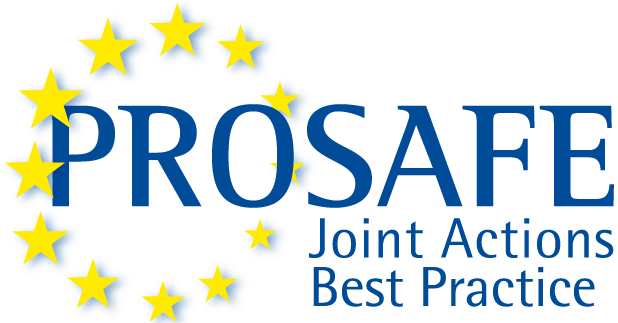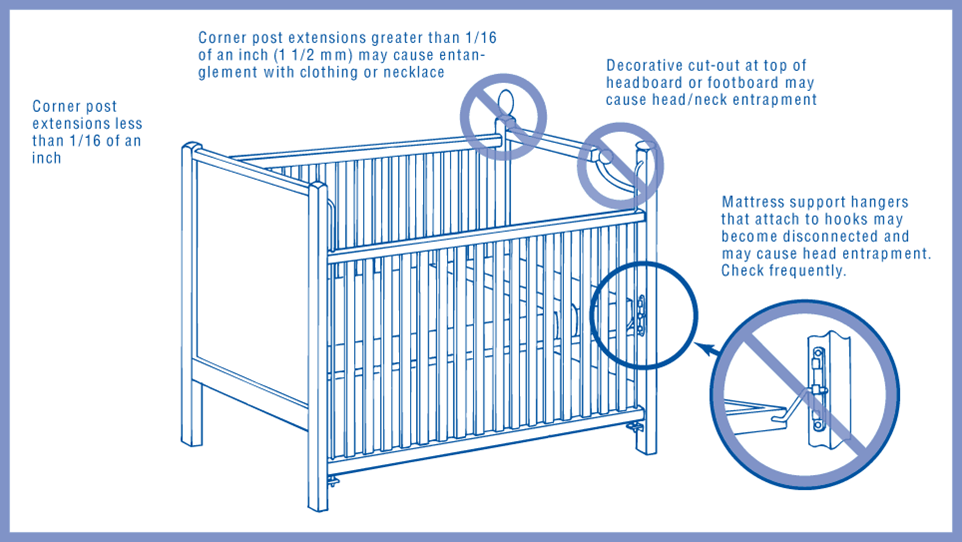JA2013 - Cots
Childcare articles (CCA) were again proposed as a class of products due to the importance of this particular sector (for further information see JA2011- CCA (WCC and BBT) and JA2012-Highchairs). It is clear that this is a significant product group and PROSAFE have made a long term commitment to continue with the examination of further CCA in the future. The selection of cots resulted from a priority-setting exercise that was initiated within the framework of JA2011. The CCA priority list was further updated by this working group, and as a consequence of this study, Safety Barriers (otherwise known as stair/baby gates) are being examined under JA2014.
 Funding for the testing of cots was granted due to the large number of reported accidents that involved children aged between 0-4 and cots (17,000 incidents were notified according to the European Injury Database between 2005 and 2007). It has also been reported by the US Consumer Product Safety Commission that more babies die in incidents involving cots and cot-related products than any other child care items. The current European standard for cots EN 716-1&2:2008+A1:2013 was revised in 2008 and amended in 2013. Of particular concern were travel/folding cots, which are included within this legislation for the first time.
Funding for the testing of cots was granted due to the large number of reported accidents that involved children aged between 0-4 and cots (17,000 incidents were notified according to the European Injury Database between 2005 and 2007). It has also been reported by the US Consumer Product Safety Commission that more babies die in incidents involving cots and cot-related products than any other child care items. The current European standard for cots EN 716-1&2:2008+A1:2013 was revised in 2008 and amended in 2013. Of particular concern were travel/folding cots, which are included within this legislation for the first time.

The Final Technical Report of this activity can be downloaded by clicking on the cover page of the report. Very interesting information can be found within this report and it is particularly useful for market surveillance authorities and anybody else interested to know more about safety aspects of cots and travel cots.

